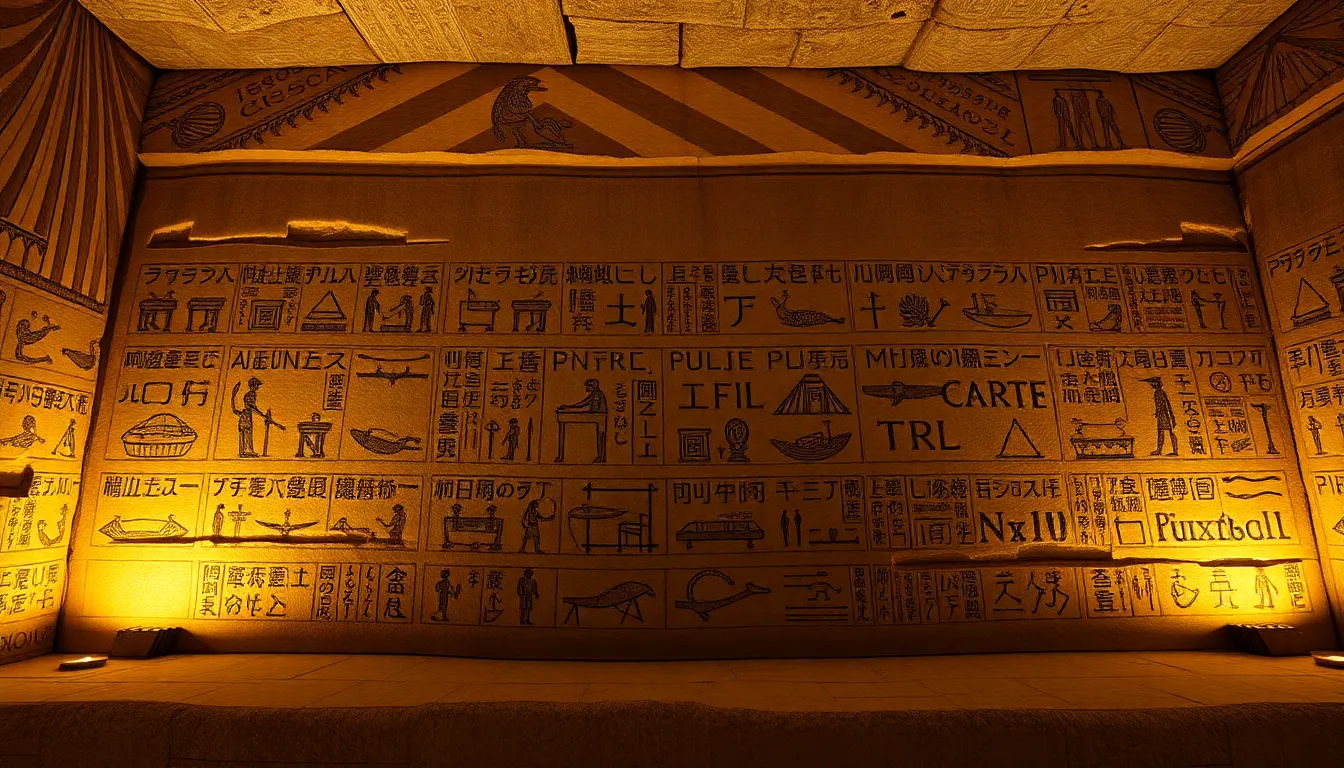The Significance of Funerary Texts in Egyptian Tombs
I. Introduction
Funerary texts are a critical component of ancient Egyptian burial practices. These texts, inscribed on tomb walls, coffins, and papyrus scrolls, were intended to assist the deceased in their journey to the afterlife. They encompass a wide range of spells, prayers, and instructions designed to protect and guide the individual as they navigated the challenges of the afterlife.
The role of these texts in ancient Egyptian culture cannot be overstated, as they reflect the beliefs, values, and rituals surrounding death and the afterlife. Studying funerary texts provides invaluable insights into the spiritual life of ancient Egyptians and their understanding of immortality.
II. Historical Context of Funerary Texts
Funerary texts have evolved significantly from the early Pyramid Texts, which date back to the Old Kingdom, to the more extensive and accessible Book of the Dead during the New Kingdom.
- Pyramid Texts: The oldest known religious texts in the world, found in the pyramids of Saqqara, these texts primarily served the pharaohs.
- Coffin Texts: Emerging during the Middle Kingdom, these texts were more inclusive, available to non-royal individuals.
- Book of the Dead: A compilation of spells and illustrations, this text democratized access to the afterlife, allowing anyone who could afford it to be buried with these texts.
The creation of these texts was heavily influenced by socio-political conditions, with scribes playing a pivotal role in their production. Scribes were highly respected in society, tasked with writing and preserving these crucial documents.
III. Types of Funerary Texts
There are several notable types of funerary texts, each serving different purposes and audiences:
- Pyramid Texts: Found in the burial chambers of kings, these texts were intended to ensure the pharaoh’s safe passage to the afterlife.
- Coffin Texts: These texts were written on the inside of coffins and provided spells for the deceased’s protection, available to nobles and wealthy individuals.
- The Book of the Dead: A collection of spells designed to assist the dead in the afterlife, often written on papyrus scrolls and placed in tombs.
- Other Texts: Lesser-known texts include the Amduat and the Litany of Re, which describe the journey of the sun god and the deceased through the afterlife.
IV. The Purpose of Funerary Texts
The primary purpose of funerary texts was to offer protection and guidance to the deceased during their journey into the afterlife. These texts served multiple functions:
- Protection: Spells were intended to safeguard the deceased from malevolent forces.
- Guidance: Texts provided instructions on how to navigate the afterlife, including encounters with gods and monsters.
- Ritual Significance: Many texts were recited during burial rites, reinforcing the connection between the living and the dead.
- Ensuring Immortality: The belief in the power of words meant that proper recitation could secure a place in the afterlife.
V. Iconography and Symbolism in Funerary Texts
Funerary texts are rich in iconography and symbolism, which enhance their meanings and functions:
- Common Symbols: Various symbols like the ankh (life), the scarab (rebirth), and the eye of Horus (protection) frequently appear.
- Text and Imagery: The interplay between written text and visual imagery in tomb decorations creates a holistic experience for the deceased and the living.
- Spells and Prayers: Specific spells were designed to invoke the presence of gods, ensuring the deceased received divine assistance.
VI. Funerary Texts and Social Status
Access to funerary texts often correlated with social status in ancient Egypt:
- Royalty vs. Commoners: Pharaohs had access to the most elaborate texts, while commoners had simpler versions.
- Social Hierarchy: The ability to afford funerary texts was a reflection of wealth and status, impacting the quality and quantity of inscriptions.
- Implications for Society: The differences in funerary practices highlight the rigid class structures of ancient Egyptian society.
VII. Archaeological Discoveries and Their Impact
Numerous archaeological discoveries have shed light on funerary texts and their significance:
- Key Sites: Excavations at sites like the Valley of the Kings and Saqqara have revealed rich collections of funerary texts.
- Modern Technology: Techniques such as multispectral imaging and digital analysis have helped decipher faded texts and understand their context better.
- Case Studies: Tombs such as that of Tutankhamun have provided exceptional examples of funerary texts and artifacts, illustrating the beliefs and practices of the time.
VIII. Conclusion
In conclusion, funerary texts are fundamental to understanding ancient Egyptian beliefs about death and the afterlife. They offer rich insights into the spiritual, social, and cultural dimensions of ancient Egyptian society. The study of these texts remains crucial in contemporary Egyptology, illuminating the complexities of a civilization that continues to fascinate scholars and enthusiasts alike. Future research may delve deeper into lesser-known texts and explore the nuances of funerary practices across different periods, enriching our understanding of this ancient culture.




